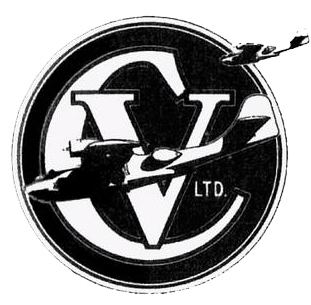Defunct 1944 Founded 1911 | Ceased operations 1944 | |
 | ||
Parent organizations | ||
Canadian Vickers Limited was an aircraft and shipbuilding company that operated in Canada during the early part of the 20th century until 1944. A subsidiary of the UK parent, it built its own aircraft designs as well as others under licence. Canadair absorbed the Canadian Vickers Ltd. aircraft operations in November 1944.
Contents
Shipbuilding
British ship building and weapons manufacturing conglomerate Vickers Sons & Maxim was invited by the Government of Canada in 1911 to establish a Canadian division to manufacture vessels for the nascent Royal Canadian Navy. Vickers Sons & Maxim established Canadian Vickers Ltd. and constructed Maisonville Shipyard at Viauville (Mercier–Hochelaga-Maisonneuve) in the east end of Montreal near Boulevard Viau and rue Notre-Dame Est.
Today the old shipyard buildings are gone replaced by silos and port facilities now owned by the Port of Montreal.
During World War I the yard built the Holland 602 type submarine for the British and the Italian Navy. They were known as the British H class submarine in the Royal Navy:
This shipyard would go on to produce many civilian and military ships in Canada, including:
Canadian Vickers also manufactured luxury yachts and vessels that were later converted as yachts:
Canadian Vickers was sold in 1926 and reacquired by Vickers in 1956. Renamed Vickers Canada Limited in 1978 after being sold to Canadian interest and renamed several times again by the last owners Marine Industries (as Versatile Vickers Inc in 1981 and MIL Vickers in 1987). Shipbuiding operations ceased by 1988.
Aerospace
Canadian Vickers ventured into aircraft manufacturing in 1923 when it won a contract to supply Vickers Viking flying boats to the recently formed Canadian Air Force (Royal Canadian Air Force from 1924). Between 1923 and 1944, Canadian Vickers produced over 400 aircraft, some of which were original Vickers' designs while the remainder were other manufacturers' designs built under license.
In July 1941, the Canadian government awarded Canadian Vickers a contract to produce PBV-1 "Canso" amphibians (a version of the Consolidated PBY Catalina flying boat) for the Royal Canadian Air Force. Many of the aircraft were delivered to the United States Navy as the PBV-1; also to the United States Army Air Forces as the OA-10A for rescue work.
To speed Canso production, the government authorized construction of a new manufacturing facility at Cartierville Airport in Ville Saint Laurent, on the north-western outskirts of Montreal, and appointed Canadian Vickers to manage the plant's operation on the government's behalf. Independently Boeing also produced Catalinas in Canada.
In 1944, business pressure compelled Canadian Vickers to ask the government to relieve it of its management responsibilities regarding the Cartierville plant. Ottawa agreed and entered into a management contract with Canadair Limited, a new company founded by a small group of former senior Canadian Vickers personnel headed by Benjamin W. Franklin (no relation to his famous namesake). On 4 November 1944, Canadair Limited took over operation of the plant. In September 1946, Canadair Limited and the plant were acquired by the Electric Boat Company of Groton, Connecticut.
In 1952, Electric Boat bought Consolidated Vultee and combined it, Canadair, and several smaller companies to form General Dynamics Corporation. General Dynamics later became one of the largest U.S. aerospace corporations. Canadair remained a General Dynamics subsidiary until January 1976 when it was re-acquired by the Canadian government.
In December 1986, the government again sold Canadair, this time to Bombardier Inc., a Quebec-based international conglomerate. Today, Canadair itself no longer exists as a separate entity having been absorbed into Bombardier Aerospace.
Canadian Vickers aircraft designs
License production
Other aircraft work
Unbuilt aircraft
For aircraft built after 1944, those aircraft were built under the Canadair name.
Railcars
Versatile Vickers used the former Canadian Vickers plant briefly to build rail cars in the 1960s and 1970s during the period of turmoil at the shipyard in Montreal. The rail car products were mostly built under contract, or licensed from other rail car builders or as joint production efforts. In 1979 Vickers name was changed from Canadian Vickers Ltd. to Vickers Canada, Inc. following the purchase of its shares by the Canadian management from the British holding company. In 1981 the name was again changed to Versatile Vickers, Inc. This company went out of business in 1990.
